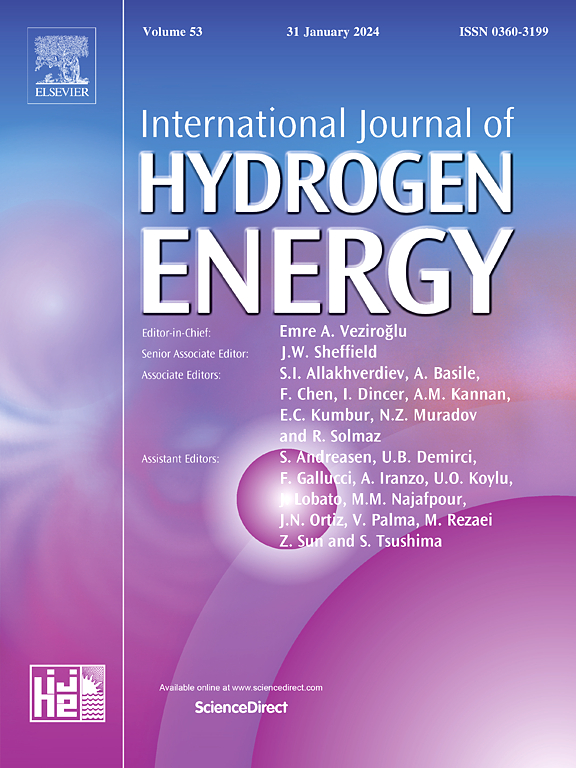Technical evaluation of plasma-assisted entrained flow gasification for hydrogen-rich syngas production from waste and biomass
IF 8.1
2区 工程技术
Q1 CHEMISTRY, PHYSICAL
引用次数: 0
Abstract
Plasma-assisted entrained flow gasification (EFG) offers a potential solution to convert low-quality biomass and waste feedstocks into high-quality syngas. This study, therefore, evaluates the theoretical technical potential of steam plasma-assisted EFG using a novel Aspen Plus model (eGas), which integrates the simulation of thermodynamic plasma properties and dissociation phenomena into Aspen Plus. Simulation results show that increasing the electrification ratio (ELR) to 0.48, corresponding to full steam plasma gasification, raises the H2/CO ratio to 1.03—more than double that of oxygen-blown EFG—while improving carbon conversion efficiency (CCE) to 95 % and reducing syngas CO2 content by 79 %. The hydrogen-specific energy demand (HSED) reaches 181 MJ/kg H2, outperforming proton exchange membrane (PEM) electrolysis (198 MJ/kg H2) for H2 addition to syngas. Plasma power conversion efficiencies exceed 85 %. Validation against NASA CEA and Cantera confirms the model's accuracy. This highlights plasma-assisted EFG as a promising future technology for hydrogen-rich syngas production.

等离子体辅助携流气化从废物和生物质中生产富氢合成气的技术评价
等离子体辅助夹带流气化(EFG)提供了一种将低质量生物质和废物原料转化为高质量合成气的潜在解决方案。因此,本研究使用一种新的Aspen Plus模型(eGas)来评估蒸汽等离子体辅助EFG的理论技术潜力,该模型将热力学等离子体特性和解离现象的模拟集成到Aspen Plus中。模拟结果表明,将全蒸汽等离子气化的电气化比(ELR)提高到0.48,将H2/CO比提高到1.03——是吹氧等离子气化的两倍多,同时将碳转化效率(CCE)提高到95%,将合成气CO2含量降低79%。氢气比能需求(HSED)达到181 MJ/kg H2,优于质子交换膜(PEM)电解(198 MJ/kg H2)。等离子体功率转换效率超过85%。对NASA CEA和Cantera的验证证实了该模型的准确性。这凸显了等离子体辅助EFG作为富氢合成气生产的一种有前途的未来技术。
本文章由计算机程序翻译,如有差异,请以英文原文为准。
求助全文
约1分钟内获得全文
求助全文
来源期刊

International Journal of Hydrogen Energy
工程技术-环境科学
CiteScore
13.50
自引率
25.00%
发文量
3502
审稿时长
60 days
期刊介绍:
The objective of the International Journal of Hydrogen Energy is to facilitate the exchange of new ideas, technological advancements, and research findings in the field of Hydrogen Energy among scientists and engineers worldwide. This journal showcases original research, both analytical and experimental, covering various aspects of Hydrogen Energy. These include production, storage, transmission, utilization, enabling technologies, environmental impact, economic considerations, and global perspectives on hydrogen and its carriers such as NH3, CH4, alcohols, etc.
The utilization aspect encompasses various methods such as thermochemical (combustion), photochemical, electrochemical (fuel cells), and nuclear conversion of hydrogen, hydrogen isotopes, and hydrogen carriers into thermal, mechanical, and electrical energies. The applications of these energies can be found in transportation (including aerospace), industrial, commercial, and residential sectors.
 求助内容:
求助内容: 应助结果提醒方式:
应助结果提醒方式:


